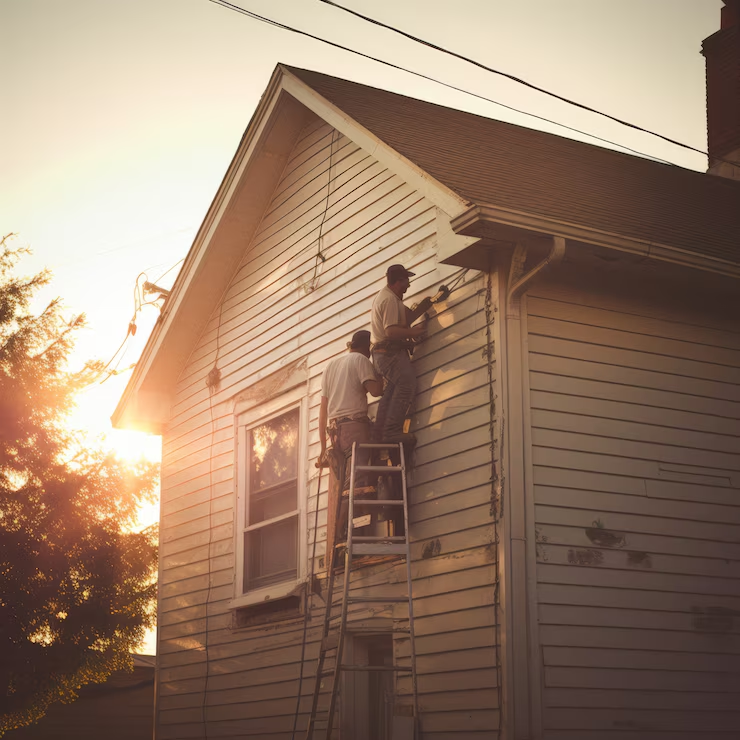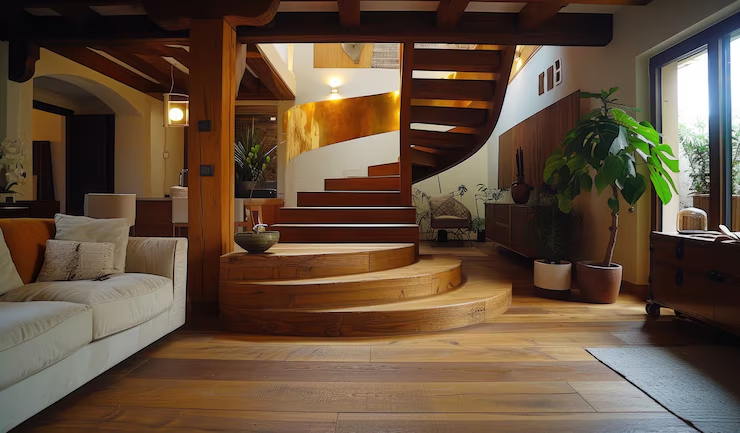When it comes to revitalizing a home, few upgrades make a bigger visual impact than a fresh coat of paint. Whether you’re aiming to boost curb appeal or transform your interior space, knowing what to expect from each type of project is essential. Interior and exterior painting differ greatly in scope, preparation, materials, and execution. Understanding these distinctions ensures that you’re getting the right value and service for your investment.
While many homeowners search for residential painting services to handle both interior and exterior jobs, the approach and deliverables for each are far from identical. This guide breaks down the essential elements you should expect from a professional painter—inside and out.
Surface Preparation: The Foundation of Quality Work
The success of any painting project hinges on how well the surfaces are prepped before a single drop of paint is applied.
For interiors, preparation involves patching drywall, sanding surfaces, removing old wallpaper, and repairing nail holes or cracks. Precision is key in indoor spaces where lighting can highlight imperfections.
For exteriors, prep is significantly more labour-intensive. Professionals will typically pressure wash the surface, scrape peeling paint, sand rough areas, and repair or caulk damaged siding, trim, or fascia. In some cases, addressing mildew or rot is also required. Exterior prep must account for weather exposure and structural wear, making it an essential component of durability.
Material Selection: Not All Paints Are Created Equal
The materials used for interior versus exterior applications differ for good reason.
Interior paints prioritize aesthetics, smoothness, and ease of cleaning. They’re formulated to be low in VOCs (volatile organic compounds) for better indoor air quality. Finishes like eggshell, satin, or semi-gloss are selected based on traffic levels in a room.
Exterior paints, on the other hand, need to resist UV rays, temperature fluctuations, precipitation, and pollution. They contain resins and additives that improve adhesion and durability. Sheens like matte or satin are common, providing protection without drawing attention to surface flaws.
Timing and Conditions: Weather Matters Outside
Painting the inside of your home can be done virtually year-round, provided there’s good ventilation.
Exterior painting, however, is more sensitive to weather. Professionals monitor temperature, humidity, and precipitation to ensure optimal curing and adhesion. Most jobs are scheduled in spring through early fall, avoiding wet or overly hot conditions. Rushing this process can lead to premature peeling or cracking.
Colour Consultation and Design Guidance
A professional paint job does more than change colours—it shapes the personality of your home.
Indoors, painters often offer colour consultations tailored to lighting conditions, furniture, and your design goals. Since colour perception changes with artificial and natural light, guidance in this area is invaluable.
For exteriors, selecting hues that suit the neighbourhood, architecture, and environment is just as important. Painters may provide digital previews or test swatches to help homeowners visualize the finished look, factoring in permanent fixtures like roofing and landscaping.
Protection of Surroundings: Clean Job, Minimal Disruption
Interior work requires care to protect your belongings. Reputable crews will move or cover furniture, tape off trim, mask floors, and seal vents. Ensuring minimal dust or paint splatter is a sign of professional-grade service.
In exterior settings, attention shifts to protecting landscaping, windows, doors, and fixtures. Drop cloths, masking tape, and precise brushwork are crucial, especially in close quarters like porches or near gardens.
Number of Coats: Coverage Expectations
For both interior and exterior jobs, the standard is usually two coats—a primer followed by a finishing layer.
In interior spaces, primers help with colour consistency and wall adhesion, especially on new drywall or when covering dark colours. Some high-quality paints offer primer-paint combinations, depending on the situation.
Exterior applications almost always require a dedicated primer, especially on raw or weathered surfaces. The final coat then provides the visual and protective finish.
Safety and Compliance
Professionals should be trained to handle the specific risks of each environment.
Indoors, this might include managing paint fumes safely, using low-odour materials, and working in occupied homes with minimal disruption.
Outside, safety protocols increase in complexity. Crews often use scaffolding or ladders and may require fall protection measures. They also need to comply with local bylaws regarding noise, waste disposal, and environmental runoff.
Cleanup and Post-Project Walkthrough
The job isn’t done when the final stroke is applied.
Interior projects wrap up with a full cleanup—removing plastic coverings, wiping surfaces, reinstalling switch plates, and ensuring the space is livable immediately.
Exterior cleanup involves picking up drop cloths, disposing of paint waste responsibly, and removing any temporary scaffolding or tape. A thorough final inspection ensures even coverage, straight edges, and zero missed spots.
Warranty and Aftercare
Good painters back their work.
Interior warranties may cover things like peeling or blistering for 2–5 years, especially if quality paints were used and conditions inside remain stable.
Exterior warranties often span longer—sometimes up to 10 years—but depend heavily on exposure, materials used, and ongoing maintenance like gutter cleaning or caulking. Asking for written warranties upfront can protect your investment long-term.
Final Thoughts on Getting the Job Done Right
Painting may seem like a straightforward upgrade, but a deeper look reveals just how much goes into a professional finish. Interior and exterior projects are vastly different, not only in their technical requirements but also in the environments they serve. From surface prep to finish selection, every step requires care, experience, and specialized materials.
By knowing what to expect from each type of service, homeowners can better plan their projects and feel confident when hiring professionals. Whether you’re refreshing your living room or boosting your home’s curb appeal, partnering with the right experts makes all the difference.
For more, visit our website, Homethreads







